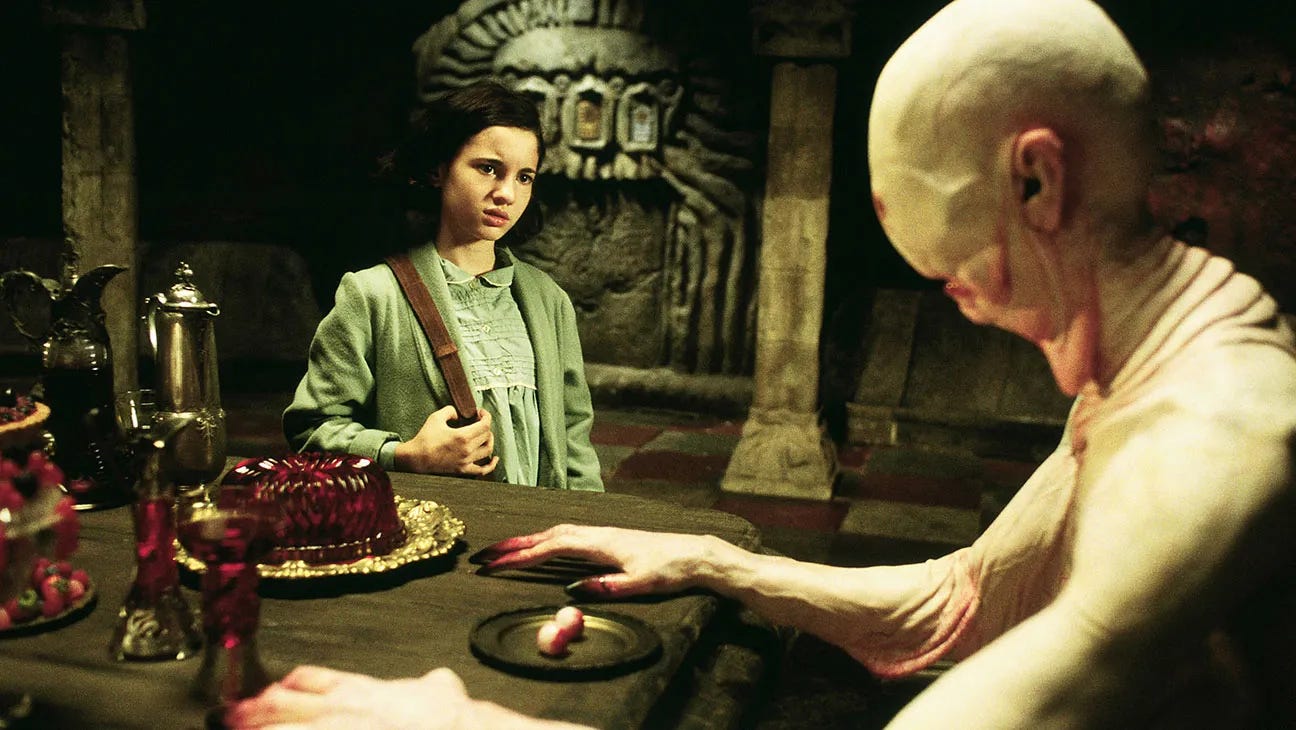Pan’s Labyrinth and the horror of flesh eating
I’ve been meaning to watch Pan’s Labyrinth, Guillermo del Toro’s dark fairy tale set in fascist Spain, since the film was released to critical acclaim in 2006. I finally got around to the winner of three Academy Awards, which more than met my expectations. It‘s deservedly called a masterpiece. As an animal activist, I found a sequence which employs flesh eating as a source of horror to be particularly interesting.
Ivana Baquero stars as a young girl named Ofelia, in 1944, living with her sick, pregnant mother and a domineering stepfather, who, as a captain in the Civil Guard, hunts down resisters to Francisco Franco’s authoritarian regime. In the midst of this grim setting, Ofelia discovers the titular labyrinth, an ancient structure which leads to a magical place, perhaps more terrifying than the war-torn world she knows.
Del Toro, who, in addition to directing, also wrote the movie’s screenplay, envisioned the magical realm as real, however, he deliberately left this element up to viewers’ interpretation. Unaware of the filmmaker’s comments on the matter, in my initial watch, I leaned toward understanding the fantastical storyline as imagined, a product of Ofelia’s fears about her mother, stepfather and country.
In this magical realm, real or imagined, the scariest creature might be the Pale Man, a humanoid being with eyes in the palms of his hands. Doug Jones plays the role with the help of various practical and digital effects. Del Toro apparently wanted the creature to look like an old, obese man who had since starved — hence the stretched, loose skin we see hanging off the monster’s body in the final film.
What makes the creature most unnerving, though, is his taste for human flesh, specifically that of children. In terms of ways of dying, being eaten seems to be one which especially scares us, as humans. It seems unnatural, like a violation of the order of things. Perhaps we can only understand or acknowledge the violence of consuming another when we’re those under threat of being consumed.
When Ofelia enters the Pale Man’s lair, she notices gruesome paintings of the creature eating a number of children, as well as piles of shoes, presumably from prior victims, which can’t help but evoke the Holocaust. Despite being warned not to take anything from the monster’s table, the young girl gives into temptation, and eats two grapes from the lavish feast laid out before the Pale Man.
This awakens the creature, who pursues Ofelia as she scrambles for the exit. She barely makes it out of his lair alive. Two of her fairy guides, however, are not so lucky. The Pale Man bites off their heads in a disturbing moment inspired by Saturn Devouring His Son, a famous painting from the 1820s by Francisco Goya. The scene manages to capture some of the depravity inherent to flesh eating.
Again, Pan’s Labyrinth is a great film, which provides a unique mix of historical drama and richly-detailed fantasy. The design of creatures like the Pale Man is impressive, but the movie also deftly explores weighty subjects, like the complicity of religion with right-wing totalitarianism. I’m somewhat embarrassed by the nearly two decades it took me to see the film, but better late than never, right?


